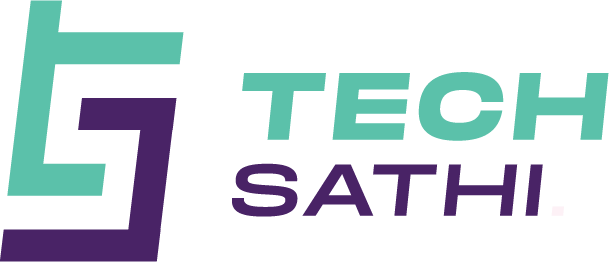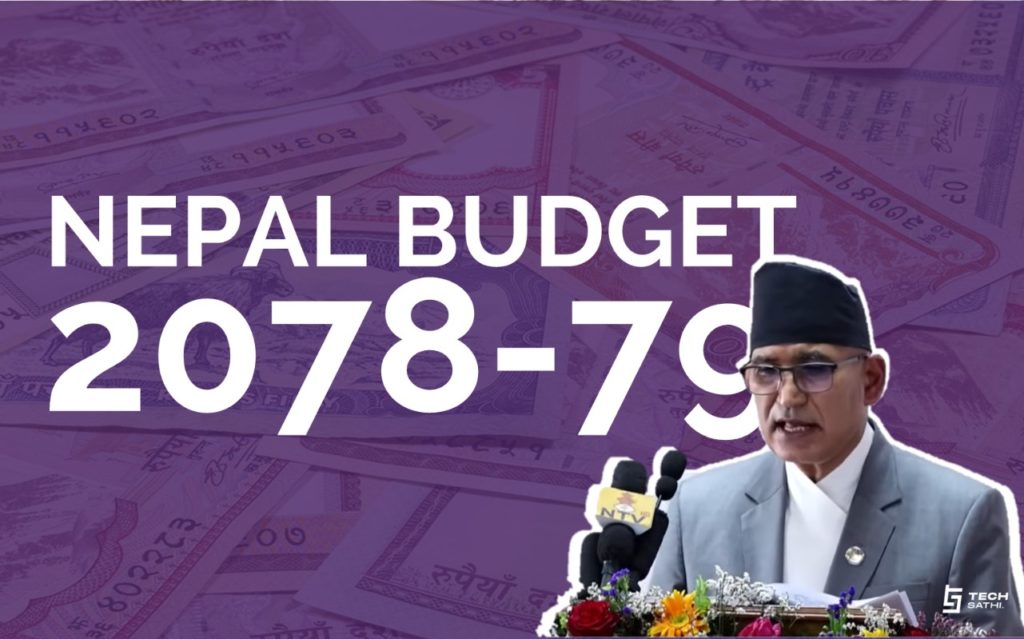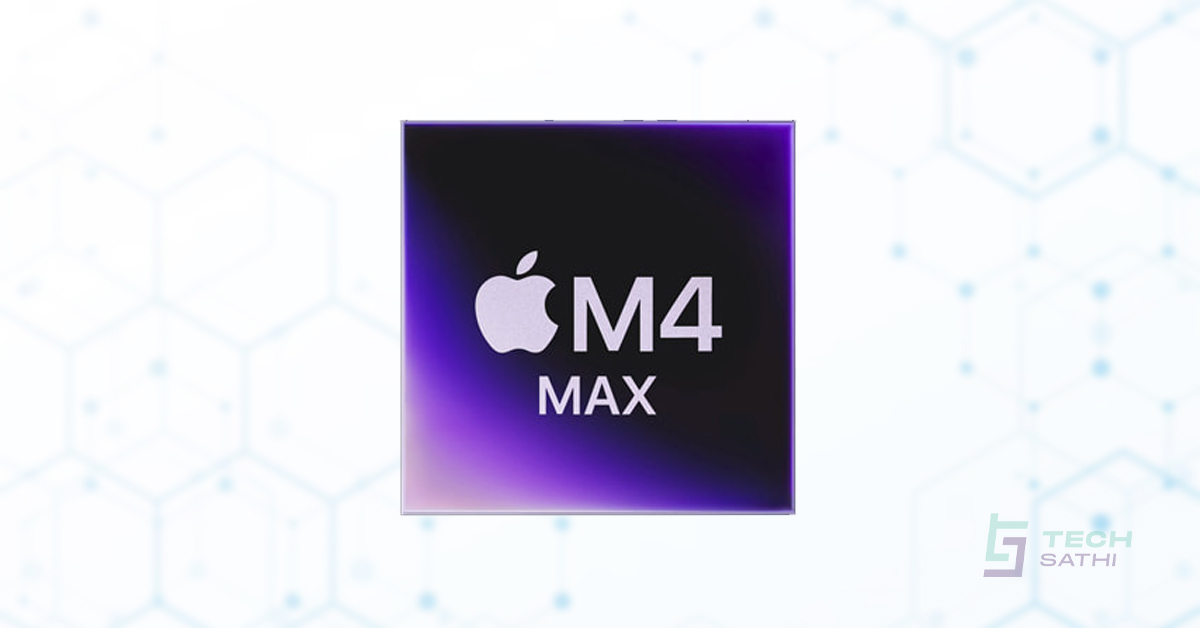The budget for the fiscal year 2078/79 has been presented on Saturday by Finance Minister Bishnu Paudel. This year’s budget size amounts to a total of Rs 1 trillion 647 billion and 570 million (16 kharba 47 arba and 57 crore rupees). Last year, it was Rs 1 trillion 474 billion, and 464 million.
Among it, 41.2% i.e. Rs 678.61 billion has been allocated for regular expenditure while 22.7% i.e. Rs 347.29 billion has been allocated for capital/development expenditure. 12.6% of the budget amount is allocated for financial management and the remaining 23.5% has been allocated for state governments and local level governments.
Well, we are not going to carbon copy the whole budget speech here. So let’s jump directly into the subject matter. Most of the entrepreneurs, tech enthusiasts, and innovative minds might be wondering whether there is something in the store for their facilitation this year or not!
Due to the outbreak of Covid-19 and its ongoing second wave, the economy has seemingly been paused (primarily for the hotel and tourism sector). A report said that everyday, the private sector is bearing the losses of Rs 2 billion. In this scenario, the budget has been prepared so as to ease the economic losses and to control the situation arising from Covid-19 outbreak.
Allocation for Technology, Digitization, Innovation and Startups
The budget for FY 2078/79 has been seemingly continuing to make space for the development of technology, innovation, and entrepreneurial activities since they are proven to be the main drivers of the economy in most countries. In this article, we will be focusing on how the budget allocation has been emphasized on digitization and technological development through the new fiscal policy.
This budget of FY 2078/79 has mentioned some of the inclusive consideration for the following sectors:
1. Health
A total sum of Rs 37.5 billion is allocated alone for the Covid-19 treatment and purchasing of the covid-19 relief supplies and vaccine. Regarding health services, it is announced that emphasis would be given to the operation of telemedicine and mobile health services. Similarly, the capacity of the National Health Laboratory would be developed so as to make it possible for every type of medical sample testing here in Nepal.
2. Education
Digitization has been introduced in the education sector as well. It is aimed that within the next 2 fiscal years, every community school in Nepal would be provided with broadband internet facilities. Regarding this, about 60% of the work is aimed to be completed within a year. Similarly, Nepal Television would start an educational channel for distance education designed for those who are deprived of education due to poor economic or health conditions. In addition to that, a loan of up to Rs 80,000 would be provided to the students of secondary and high school level in community schools with a 1% interest for 2 years to buy a laptop for assistance in their studies. Similarly, all the students above 16 years would be provided a SIM card for free.
3. Agriculture and Land Reform
In agriculture, the digital soil mapping system would be implemented for effective soil testing. Similarly, it is indicated that about 50% of the subsidy would be provided to any private entity that runs a biological chemical factory.
Continuing the agenda discussed in the previous budget, this time too emphasis on the implementation of the mobile application for providing multifaceted information regarding farm products and their prices, availability of seeds, pesticides, and farm inputs to the farmers has been reintroduced.
The system named “Mero Kitta” would be implemented fully which supports the digital mapping of lands.
4. Transportation
In this sector, it is aimed to classify all the roads of Nepal by conducting GIS mapping very soon. Similarly, the imposition of holding a Digital Driving License would be continued.
- Emphasis would be given towards installing radio frequency aided embossed number plates in the transportation vehicles of every state
- An E-ticketing system would be applied in the public transport
- Within a year, Sajha Yatayat would operate a minimum of 100 electric buses in its main routes
- Essential steps would be taken with the Public-Private partnership towards installing around 500 electric vehicles charging station, terminal building, and other infrastructures
- Emphasis would be given towards replacing petroleum-based vehicles with electric vehicles by the end of the year 2088.
5. Industries and Startups
To revive the economy from the on-going consequences of the pandemic, this fiscal policy has tried its best in supporting the industries and startups from the policy level in these ways:
- With the collaboration of the private sector, the government would give emphasis on “Made in Nepal” and “Make in Nepal” campaigns thereby promoting the local products and fostering their marketing.
- Virtual Trade Shows would be organized timely for promoting the products of SMEs and MSMEs
- The government has decided to provide lease-free land to the innovators who are into the work of producing electric vehicles and their parts
- The SAARC Handicraft Design Center in Tripureshwor would be ready for operation within a year
- The e-commerce policy would be implemented for guiding the e-commerce industry
- The sportsmen would get some waiver in the business they run after they are retired
- About Rs 13 billion has been allocated to provide an interest subsidy of 5% to SMEs and MSMEs, women-run businesses, and commercial farming.
- The students with a minimum undergraduate degree can obtain a loan up to Rs 25 lakhs with a maximum of 5% interest against the collateral of their educational certificates
The government has given emphasis to the startups by allowing seed funding up to Rs 25 lakhs (with 1% interest) to the youths against the collateral of their business plan. Similarly, the process of registration, renewal and other services would be provided through a one-door policy in free-of-cost to the startups. In addition to that, a challenge fund of Rs 1 billion has been established in order to attract FDI into the startup ecosystem in Nepal.
6. Science and Technology
- Soon the government would form the “Science, Technology and Innovation Council” to foster scientific research and innovation
- In the coming year, Madan Bhandari Science and Technology University would be brought into operation
- A total of Rs 180.4 billion has been allocated for the collective development of education, science, and technology.
7. Energy
Regarding the energy sector, this policy has aimed to facilitate around 50,000 houses with solar and wind energy. The customs duty in import of electric products like induction stove, refrigerator, microwave oven, and the dishwasher has been reduced.
8. Communication and Information Technology
Well, could this budget speech conclude without mentioning the “Digital Nepal Framework”? Absolutely not. The full implementation of the Digital Nepal Framework- 2075 would be carried out at a faster pace. As per the goal of Digital Economy, it is aimed that all the local level schools, public offices, and police stations would be well equipped by broadband internet service within 2 years. And for that, the work of installing optical fiber under the Information Superhighway across the country has been going on.
Similarly, there are other notable points like:
- 4G services would be accessible in every 753 local levels
- The National Cyber Security Reporting Portal would be made effective
- Almost all the governmental services would be integrated within “Nagarik App” to ease in delivery of the governmental services
- “Mobile Device Management System” would be into operation from Shrawan 1 to detect and control mobile theft and its misuse in criminal activities
- Any natural person using mobile, landline, and internet of Nepal Telecom network would get a 22% share of the company. This would be applicable for those who remain users of NTC till Poush, 2078.
9. FinTech
- All the revenue collection by the government and payments of Social Security Contribution and other transfer payments would be channeled through banking services
- The National Payment Switch would be operated from the next year to bring interoperability among the payment cards, retail payment, QR code payment, and other digital payment systems.
- The remittance would be collected via the banking system. And the banking customers who place their remittance inflow in the fixed deposit account are entitled to additional one percent interest for the same.
- Those who pay through debit card, credit card, QR code, or any digital system would get instant 10% cashback on the VAT amount they pay during the purchase of goods and services
The fiscal policy 2078/79 has the main objective of managing the ongoing devastating effects of Covid-19 and running the economy as much as possible towards recovery. This policy has not introduced much of the popular agendas considering the current economic tragedy. However, some provisions like promotion of electric vehicles, tax waive-off to the startups, strengthening the implementation of Digital Nepal Framework, etc have been some sort of silver lining to the dark cloud in this difficult time. Having said that, some of the provisions appear to be really vague and it silently asks for further explanation in the mind of every entrepreneur. For instance, the formulation and implementation of e-commerce policy is a matter of discussion among e-commerce entrepreneurs. The concern is whether this policy would foster the growing e-commerce industry or would it hinder their growth?
Wrapping Up
In a nutshell, it has been a recurring ritual that every year Nepal gets a highly ambitious budget plan; while in reality, it remains in the category of under performance. So, how would this fiscal policy stand out among the previous ones amid this ongoing crisis? Would the government be able to implement all the promised provisions and plans to the extent of its capacity? And what about the coming election? Would it not hinder the implementation of policies and completion of the projects? How well could the upcoming monetary policy support the implementation of this Fiscal Policy to keep up the pace of the development of the economy? Well, many Nepalese minds might have been occupied with these numerous questions. If you have some views regarding the budget of FY 2078/79, feel free to drop your comments.






